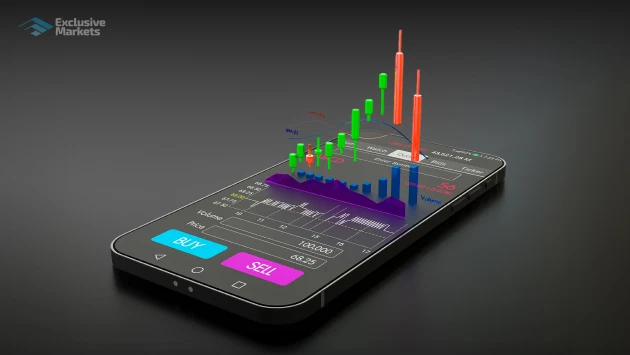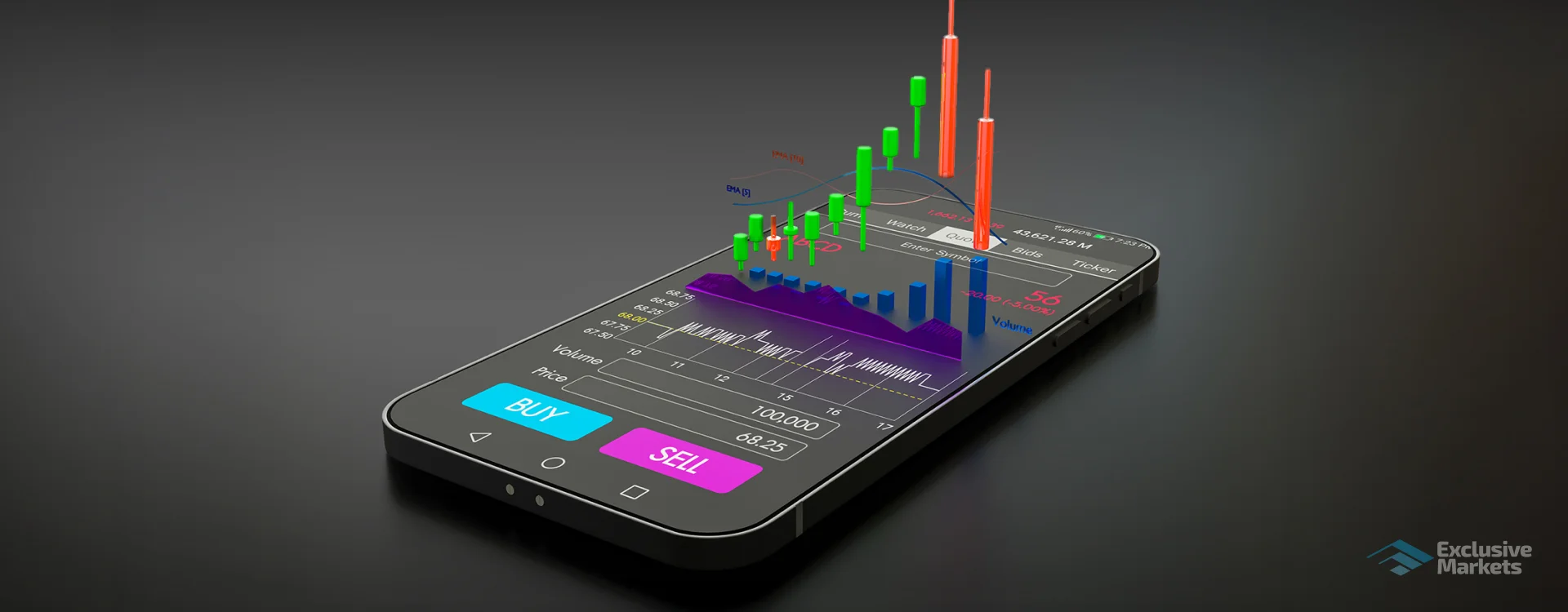
Table of Content
When it comes to technical analysis in trading, there is no shortage of indicators available to traders. However, few are as universally recognized and widely used as the Moving Average (MA). Whether you are a beginner just starting out in the world of trading or an experienced trader looking to refine your strategy, understanding how to effectively use Moving Average can provide valuable insights for your strategy.
In this blog, we will explore about Moving Average Indicator, how it works, and how to use it to improve your currency trading strategy.
What is a Moving Average Indicator?
It is a popular technical indicator used by traders to smooth out price data over a specified period of time. Its purpose is to help traders identify trends, eliminate short-term price fluctuations, and gain a clearer picture of a security's price direction.
By averaging the price over a set number of periods (whether days, hours, or minutes), it helps traders distinguish between long-term trends and short-term market noise.
Moving Average is primarily used to identify trends, determine potential entry or exit points, and offer insights into potential price trends.
Types of Moving Averages
There are several types of Moving Averages, each with a slightly different method of calculation and use.
-
Simple Moving Average (SMA)
It is one of the most straightforward types. It is calculated by adding up the closing prices of a security over a specific period of time and then dividing the sum by the number of periods.
For example, if you are calculating a 10-day SMA, you would add the closing prices of the last 10 days and divide by 10.
Pros of SMA:
- Simple to calculate and easy to understand.
- Useful for identifying long-term trends.
Cons of SMA:
- The SMA reacts slower to recent price changes compared to other, making it less sensitive in fast-moving markets.
-
Exponential Moving Average (EMA)
Unlike the SMA, the EMA gives more weight to recent prices, making it more responsive to current market movements. This means that the EMA reacts faster to price changes compared to the SMA.
The formula for the EMA is a bit more complex, but the key difference is that recent prices are weighted more heavily, giving the EMA a more “up to date” feel.
Pros of EMA:
- Reacts faster to price changes.
- Better suited for identifying short-term price trends.
Cons of EMA:
- Can be more volatile, which may lead to false signals in choppy or sideways markets.
-
Volume Weighted Moving Average (VWMA)
The Volume Weighted Moving Average (VWMA) is a type of moving average that incorporates trading volume into its calculation. Unlike the SMA and EMA, the VWMA gives more importance to periods with higher trading volumes, offering a more accurate representation of price movements driven by significant trading activity.
Pros of VWMA:
- Provides a better understanding of price movement influenced by volume.
- Effective for identifying strong trend confirmations.
Cons of VWMA:
- Less effective in low-volume markets where volume does not significantly impact price.
- Can be influenced by large single-volume spikes, which may distort trend analysis.
How is Moving Averages Calculated?
-
Simple Moving Average Calculation
To calculate an SMA, simply add up the closing prices of a security over a set number of periods (e.g., 10 days) and then divide that sum by the number of periods.
For example, if the closing prices of a stock for the last five days are as follows:
- Day 1: $20
- Day 2: $22
- Day 3: $24
- Day 4: $23
- Day 5: $21
The 5-day SMA would be calculated like this:
SMA = 20+22+24+23+21 / 5 = 110 / 5 = 22
This gives you a 5-day moving average of $22.
-
Exponential Moving Average Calculation
The EMA uses a smoothing factor that is calculated as:
EMAtoday= (Pricetoday X multiplier) + (EMAyesterday X (1-multiplier))
Where:
Price_today = The current closing price.
Multiplier = 2/n+1, where n is the number of periods.
EMA_yesterday = The EMA value from the previous period.
The calculation of EMA is more complex and requires the initial EMA to be calculated as an SMA of the first period of data. This initial EMA is then used in the calculation for all subsequent periods.
-
Volume Weighted Moving Average (VWMA) Calculation
VWMA is a type of moving average that takes both price and volume into account. It provides a more comprehensive view of the market trend by emphasizing periods with higher trading volume.
Formula:
VWMA=Sum of (Price X Volume)/Sum of Volume
Where:
Price = Closing price of the security for each period.
Volume = Trading volume for each period
How to Use Moving Averages in Trading?
It is a versatile tool that can be used in many ways. Here are some of the most common applications:
-
Trend Identification
Its most basic use is to identify the trend of the market.
- If the price is above, then it indicates an uptrend.
- If the price is below, then it indicates a downtrend.
- When the price moves sideways (not above or below the MA), it signals a neutral market.
-
Support and Resistance Levels
Another powerful use of an MA is identifying dynamic support and resistance levels. As price trends up or down, it often bounces off the moving average line, using it as a support or resistance level.
In an uptrend, it may act as support, meaning the price will often find support at or near the moving average before continuing higher. Conversely, in a downtrend, it can act as resistance, and the price may struggle to break above the MA line.
Combining Moving Averages with Other Indicators
To improve the effectiveness, traders often combine them with other technical indicators. For instance:
- Relative Strength Index (RSI): The RSI can help determine whether an asset is overbought or oversold. Combining them will help you confirm trends and avoid false signals.
- MACD (Moving Average Convergence Divergence): The MACD indicator works well with MA, especially when it comes to spotting divergences and crossovers, which indicate potential buy or sell opportunities.
Common Mistakes to Avoid When Using Moving Averages
While it is powerful tool, there are some common pitfalls to be aware of:
- Over-reliance on MAs: While they are helpful, it should not be used in isolation. Always consider other factors, such as market conditions and volume.
- Ignoring Market Conditions: MAs are more effective in trending markets and less reliable in choppy, sideways markets.
- Overcomplicating with Multiple MAs: Using too many MAs on the same chart can create unnecessary clutter and make it difficult to interpret the signals clearly.
Practical Tips for Trading with Moving Averages
-
Timeframe Selection
Choosing the right timeframe is crucial. Shorter timeframes (e.g., 5-day or 10-day MAs) are better suited for day traders or scalpers, while longer timeframes (e.g., 50-day or 200-day MAs) are preferred by swing traders or long-term investors.
-
Risk Management
As with any forex trading technique, it is essential to incorporate sound risk management practices. Always use stop-loss orders and avoid placing all your trades based solely on these signals. Trading with proper risk management ensures that even if the market moves against you, your losses will be limited.
Conclusion
The Moving Average indicator is a valuable tool that can support traders in identifying trends and in forming entry and exit strategies. Whether you are just starting or are already a seasoned trader, understanding how to use MAs effectively may enhance your market analysis and decision-making process.
At Exclusive Markets, we offer the tools and resources you need to implement your trading strategies. Start exploring the possibilities today to develop informed strategies in the foreign exchange markets.
Are you Ready to Explore the World of Trading?
Disclaimer: The information provided on this blog is for educational/informational purposes only and should not be considered financial/investment advice. Trading carries a high level of risk, and you should only trade with capital you can afford to lose. Past performance is not indicative of future results. We do not guarantee the accuracy or completeness of the information presented, and we disclaim all liability for any losses incurred from reliance on this content.

 1291
1291 08-08-2025
08-08-2025